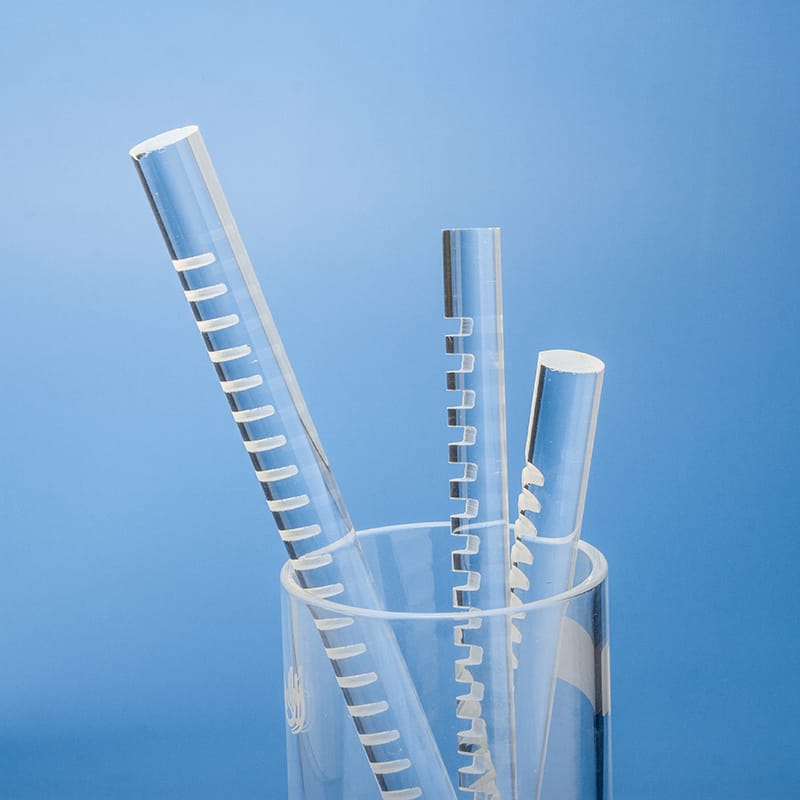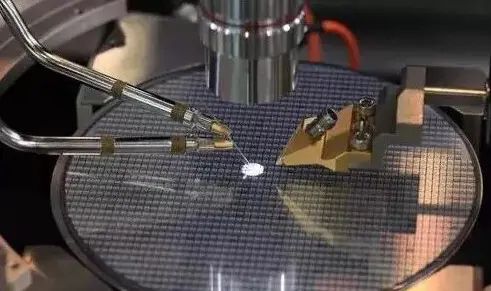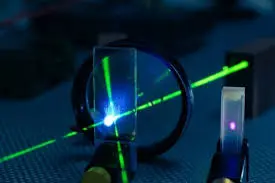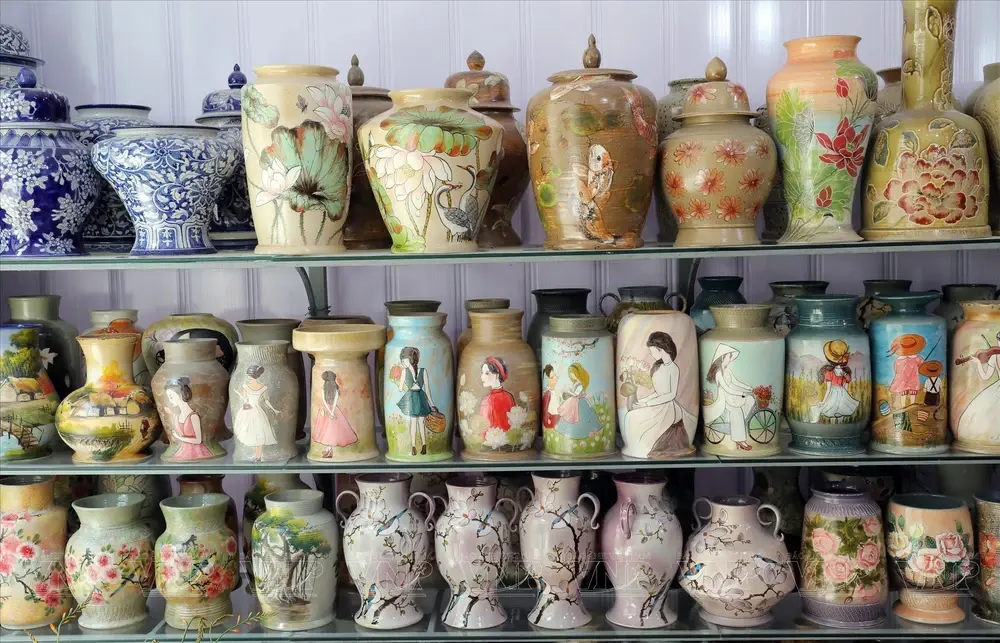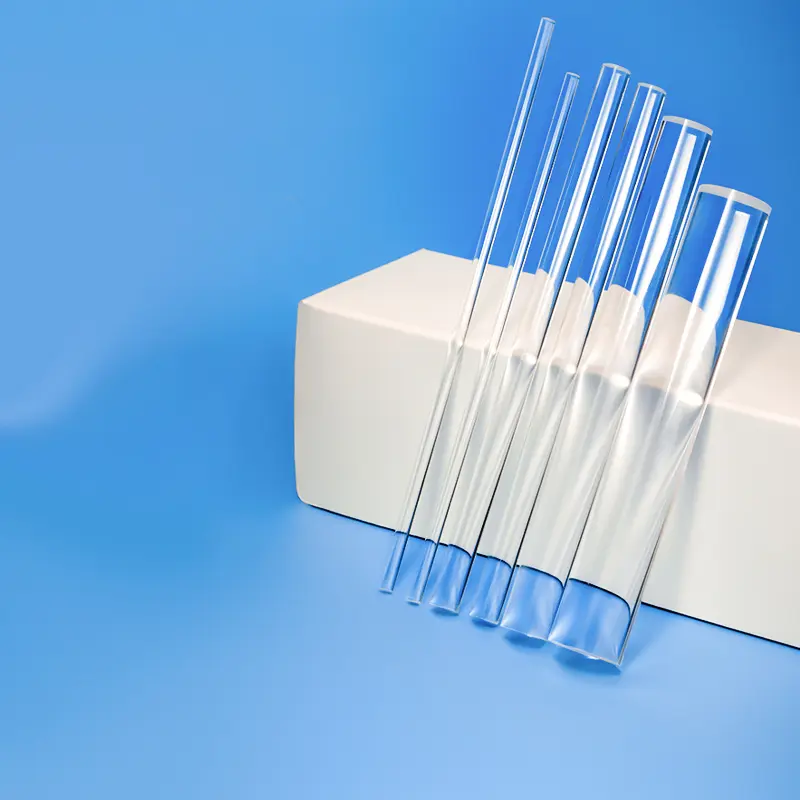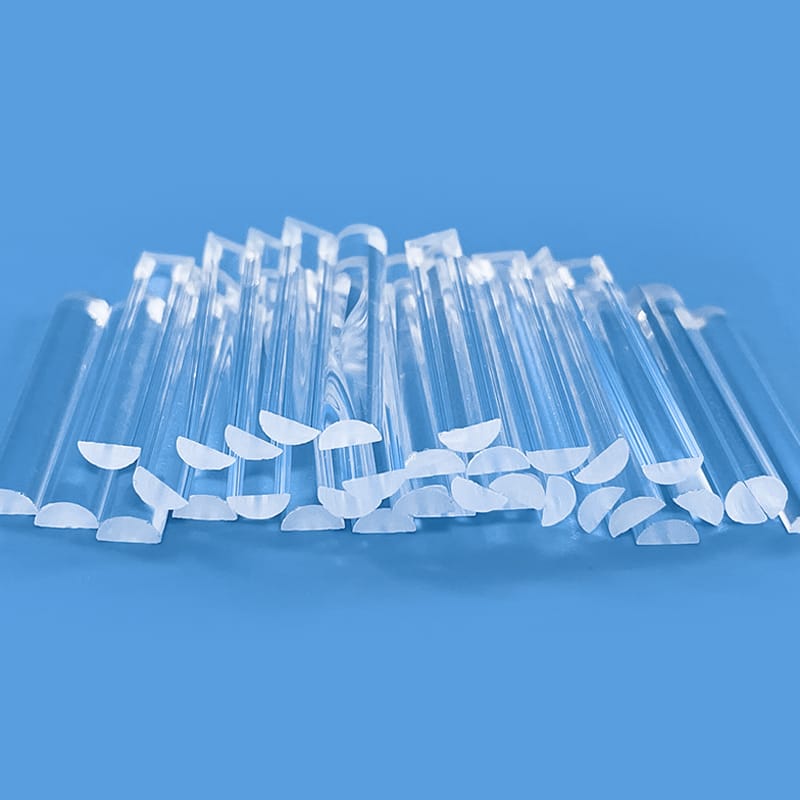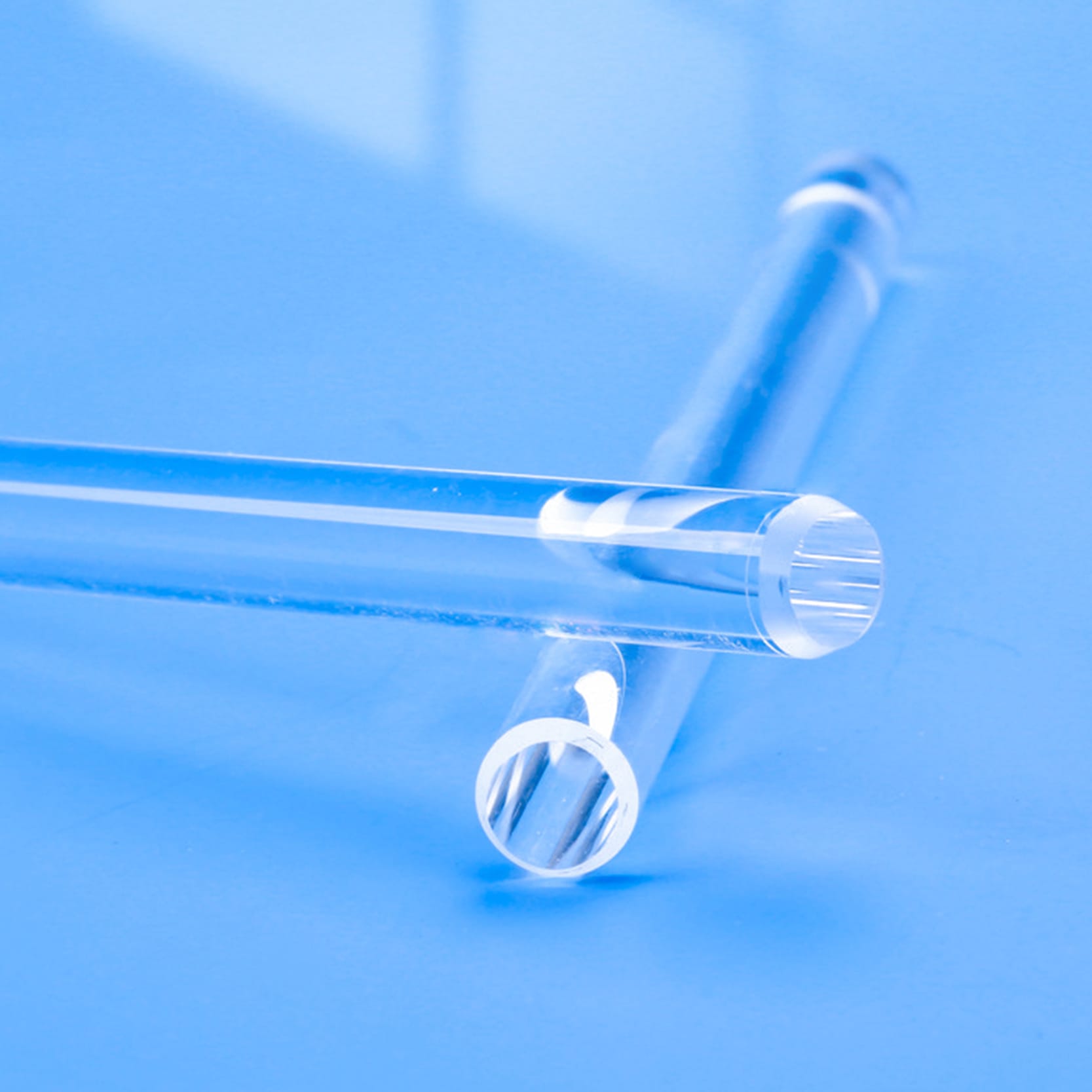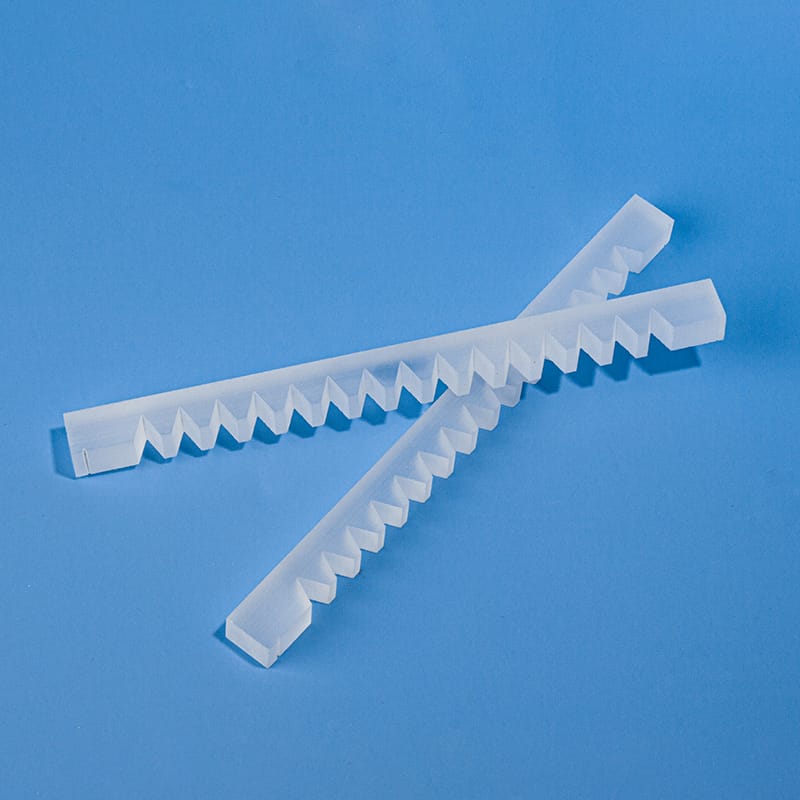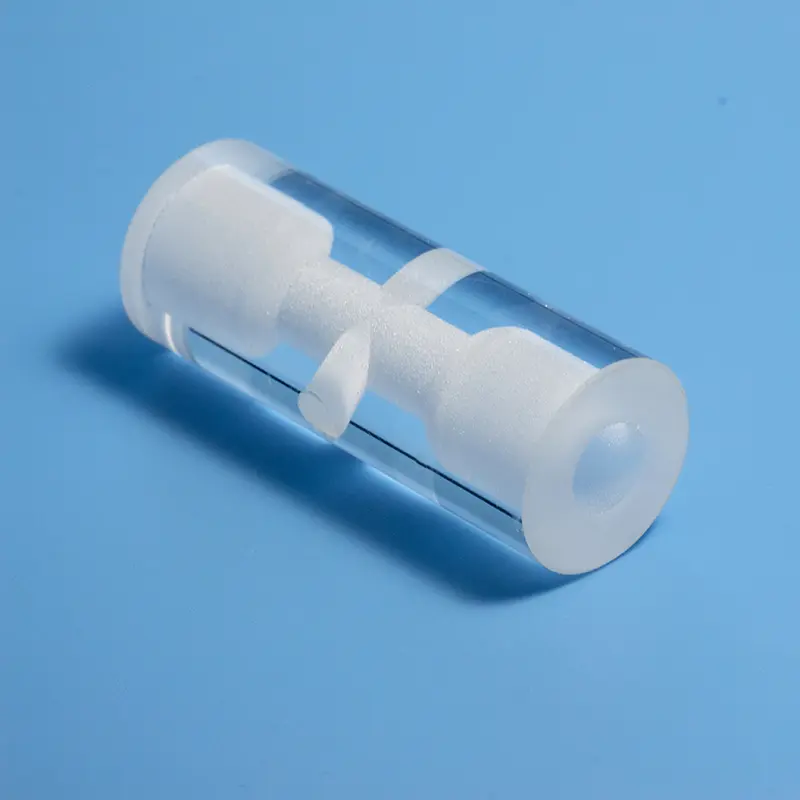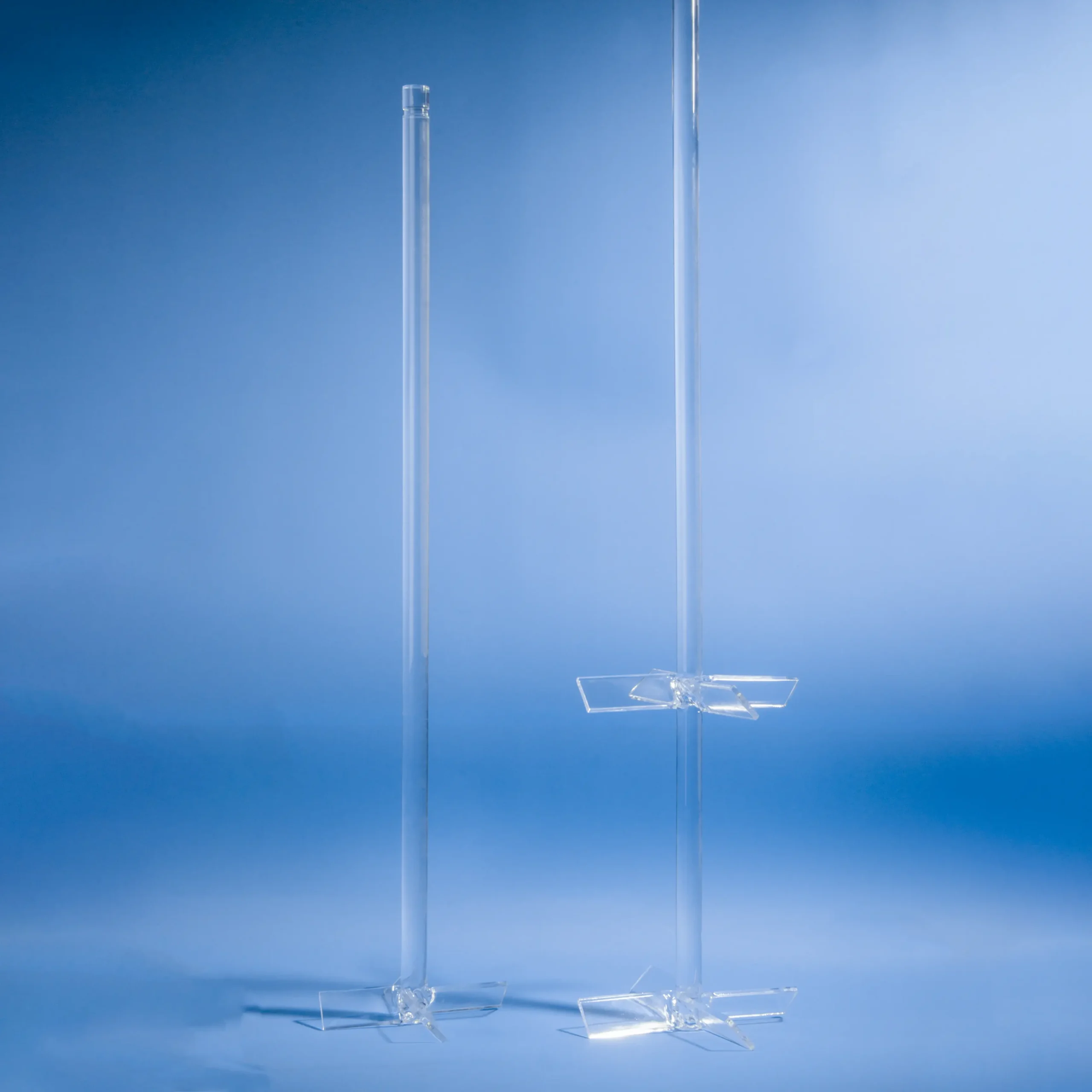Unsere hochreinen Quarz Nutstangen sind präzisionsbearbeitete Quarzglasbauteile, die für kritische Anwendungen mit außergewöhnlichen Materialeigenschaften und genauen Spezifikationen entwickelt wurden. Diese kundenspezifischen Quarzkomponenten eignen sich ideal als Quarz-Ausrichtungsstangen, Glasfaserführungen oder Stützelemente in Halbleiterprozessen und fortgeschrittenen Laborgeräten, wo Präzision und Langlebigkeit
| Durchmesser | Länge |
|---|---|
| 10mm | 300mm |
| 10mm | 600mm |
| 12mm | 300mm |
| 12mm | 600mm |
| 14mm | 300mm |
| 14mm | 600mm |
| 15mm | 300mm |
| 15mm | 600mm |
| 15mm | 1000mm |
| 16mm | 300mm |
| 16mm | 600mm |
| 16mm | 1000mm |
| 16mm | 1200mm |
| 18mm | 300mm |
| 18mm | 600mm |
| 18mm | 1000mm |
| 18mm | 1200mm |
| 20mm | 300mm |
| 20mm | 600mm |
| 20mm | 1000mm |
| 20mm | 1200mm |
| 22mm | 300mm |
| 22mm | 600mm |
| 22mm | 1000mm |
| 22mm | 1200mm |
| 25mm | 300mm |
| 25mm | 600mm |
| 25mm | 1000mm |
| 25mm | 1200mm |
| 28mm | 300mm |
| 28mm | 600mm |
| 28mm | 1000mm |
| 28mm | 1200mm |
| 30mm | 300mm |
| 30mm | 600mm |
| 30mm | 1000mm |
| 30mm | 1200mm |
| 32mm | 300mm |
| 32mm | 600mm |
| 32mm | 1000mm |
| 32mm | 1200mm |
| 35mm | 300mm |
| 35mm | 600mm |
| 35mm | 1000mm |
| 35mm | 1200mm |
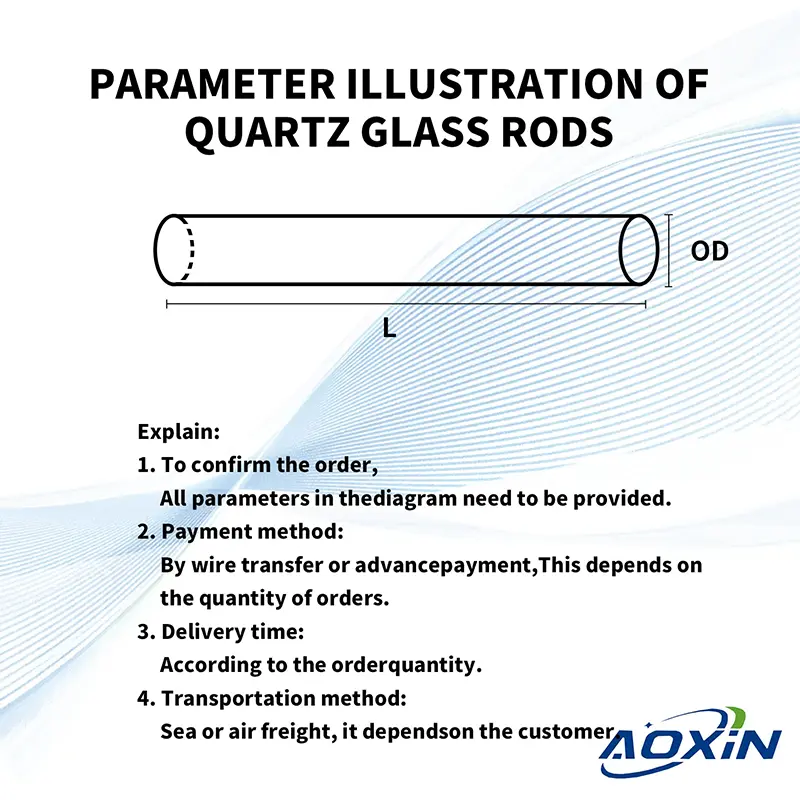
Anmerkungen:
注文を確認するために
Folgende Parameter sind erforderlich:
① Außendurchmesser ② Länge ③ Menge
- Zahlungsmethode:
Per Überweisung oder Vorauszahlung
Es hängt von der Bestellmenge ab. - Delivery time:
According to the order quantity. - Versandmethode:
Per See oder Luft
Es hängt vom Kunden ab.
| Eigenschaftsinhalt | Eigenschaftswerte |
|---|---|
| SiO2 | 99.99% |
| Dichte | 2,2×10³ kg/cm³ |
| Härte | Mohs-Härte 5,5 - 6,5; Knoop-Härte 570 (bei 100 g Prüflast) |
| Zugfestigkeit | 4,8 × 10⁷ Pa (48 N/mm² bzw. 48 MPa); 7.000 psi |
| Druckfestigkeit | >1.1×10⁹ Pa (160,000 psi) |
| Wärmeausdehnungskoeffizient | 5.5×10⁻⁷ cm/cm·°C (20°C-320°C) |
| Wärmeleitfähigkeit | 1,4 W/m-°C |
| Spezifische Wärme | 670 J/kg-°C |
| Erweichungspunkt | 1730°C (3146°F) |
| Transformationspunkt | 1210°C (2210°F) |
| Spannungspunkt | 1120°C (2048°F) |
| Arbeitstemperatur | 1200°C (2192°F) |
| Elektrischer Widerstand | 7×10⁷ Ohm cm (350°C) |
| Größe | Kundenspezifisch |
| Logo | Personalisierung mit Logo |
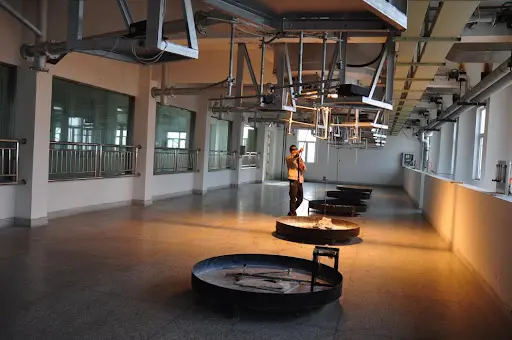
Es gibt zwei Hauptmethoden zur Herstellung von Quarzstäben: das kontinuierliche Verfahren und das Flammenfusionsverfahren (auch bekannt als Gasfusionsverfahren).
Kontinuierliches Verfahren: In dieser Methode wird Quarzsand von oben in einen Ofen eingespeist, der aus einem metallischen Quarz-Krug besteht, der von elektrischen Heizelementen umgeben ist. Der Quarzsand schmilzt bei hohen Temperaturen. Das geschmolzene Material passiert dann eine Formöffnung am Boden des Krugs, wodurch Stäbe, Rohre, Platten oder andere spezifizierte Produktformen erzeugt werden.
Flammenfusionsmethode: Dieses Verfahren beinhaltet die Verwendung von Wasserstoff und Sauerstoff, um farblosen Quarzkristall zu schmelzen. Das geschmolzene Material wird durch das Schmelzen und Erstarren von Kristallpartikeln in der Flamme zu Quarzglas geformt. Das Quarzglas wird dann auf verschiedene Weisen aus der Flamme entfernt und zu Quarzstäben der gewünschten Form verarbeitet.
Halbleiterindustrie
Im Halbleiterfertigungsprozess werden Quarzschlitzstäbe zur Bearbeitung kritischer Komponenten wie Wafer eingesetzt. Sie gewährleisten die Präzision und Qualität der Produkte durch präzise Schlitzbearbeitungsprozesse.
Herstellung von optischen Instrumenten
Quarz-Rippenstäbe werden ebenfalls häufig in der Herstellung optischer Instrumente verwendet, um beispielsweise Schlitze in Linsen und Prismen zu erstellen, die den Anforderungen hochpräziser optischer Systeme entsprechen.
Keramische Industrie
Bei der Formgebung und Sinterung von Keramiken werden Siliziumdioxid-Schlitzstangen verwendet, um Schlitzformen mit spezifischen Formen oder Strukturen zu erstellen, wodurch die Qualität und der Ertrag keramischer Produkte verbessert werden.
Weitere industrielle Anwendungen
Der Aufbau eines Quarzquirls umfasst in der Regel den Quirlkörper, den Kopf und den Verbindungssteg. Die Köpfe sind in verschiedenen Formen, wie z. B. Platten oder Kegel, gestaltet, um unterschiedlichen Rührbedürfnissen gerecht zu werden. Verbindungsstege sind normalerweise mit Einstellknöpfen ausgestattet, um die Länge des Quirls einfach anzupassen.
Anwendungsszenario
Der Schlitzprozess umfasst mehrere Schritte: Zuerst wird ein Quarzrundstab zu einem quadratischen Stab geformt. Dann werden die Enden des quadratischen Stabs abgeschnitten und die Ebenheit, Länge und Rechtwinkligkeit des quadratischen Stabs überprüft. Anschließend wird der quadratische Stab in eine Graphitplatte eingebettet, die an ihrer oberen Oberfläche die gleiche Anzahl paralleler 'V'-förmiger Nuten aufweist. Flüssiges Wachs wird dann gegossen, um den quadratischen Stab in den 'V'-förmigen Nuten zu sichern. Schließlich wird das flüssige Wachs mit Wasser abgekühlt, um zu festigen, wodurch die Fixierung des quadratischen Stabs abgeschlossen wird.
Die Slotting-Vorrichtung besteht aus einer 3-Achsen-CNC-Maschine mit einer Graphitplatte auf der Plattform. Die Graphitplatte verfügt über mehrere parallele „V“-förmige Rillen auf ihrer Oberseite. Dieses Design verbessert die Positionierung und Fixierung der Quarzquaderstäbe und erhöht die Genauigkeit des Slotting.
Die Verwendung von Quarz-Schlitzstäben bietet mehrere Vorteile, darunter die Verbesserung der Effizienz beim gleichzeitigen Schlitzprozess mehrerer quadratischer Stäbe, die Gewährleistung der Präzision nach dem Schlitzvorgang, die Reduzierung von Schäden an den quadratischen Stäben während des Schlitzprozesses und die Erleichterung der einfachen Entfernung der geschlitzten quadratischen Stäbe.
Häufig gestellte Fragen
Wir sind auf die durchgängige Fertigung von hochreinen Quarzglaskomponenten spezialisiert. Unsere Kernproduktlinien umfassen:
Quarzrohre & -stäbe: Eine große Auswahl an Durchmessern und Spezifikationen.
Quarzplatten & -scheiben: Präzisionsgeschnitten und poliert für optische und industrielle Anwendungen.
Quarzlaborglas: Ein komplettes Sortiment an Standard- und kundenspezifischen Glasgeräten, einschließlich Bechergläsern, Kolben und Booten.
Halbleiterquarz: Hochreine Komponenten wie Prozessrohre und Träger für die Halbleiterfertigung.
Kundenspezifische Fertigungskomponenten: Wir können komplexe Teile nach Ihren einzigartigen Designs und Spezifikationen fertigen.
Ja. Kundenspezifische Fertigung ist das Herzstück unseres Geschäfts. Mit über einem Jahrzehnt spezialisierter Erfahrung arbeiten wir eng mit Unternehmen zusammen, um erstklassige OEM/ODM-Dienstleistungen anzubieten. Unsere Kompetenzen umfassen Schweißen, Schleifen, Bohren, Polieren, Biegen und weitere Präzisionsbearbeitungstechniken, um Komponenten zu fertigen, die exakt Ihren Anforderungen entsprechen.
Qualität ist in unserem Herstellungsprozess von größter Bedeutung. Wir sind ein ISO 9001:2015 zertifizierter Hersteller, der sicherstellt, dass unsere Prozesse internationale Qualitätsmanagementstandards erfüllen.Unsere Produkte durchlaufen zudem rigorose SGS-Prüfungen hinsichtlich Reinheit und Leistung. Wir verwenden hochreine Rohmaterialien (bis zu 99,998% SiO2), um Quarzglas- und Kieselglasprodukte mit außergewöhnlicher thermischer Stabilität, hoher Temperaturbeständigkeit und chemischer Inertheit herzustellen.
Wir haben unsere Prozesse maximal effizient gestaltet:
Senden Sie Ihre Angebotsanfrage (RFQ): Senden Sie uns Ihre technischen Zeichnungen, Spezifikationen und Anforderungen über unser Kontaktformular auf der Website oder per E-Mail.
Schnelle Reaktion: Sie können eine erste Antwort innerhalb weniger Minuten und eine detaillierte Kommunikation innerhalb einer halben Stunde erwarten.
Design & Angebot: Wir liefern Ihnen innerhalb von 24 Stunden einen detaillierten Designvorschlag und ein wettbewerbsfähiges Angebot.
Prototypenentwicklung & Produktion: Nach Freigabe gehen wir zügig von der Prototypenfertigung zur Serienproduktion über, um Ihre Fristen einzuhalten.
Eine Partnerschaft mit Aoxin Quartz bietet mehrere entscheidende Vorteile:
Nachgewiesene Expertise: Mit über 10 Jahren Branchenerfahrung verfügen wir über das technische Fachwissen, um komplexe Herausforderungen zu meistern.
One-Stop Solution: We manage the entire production process, from sourcing high-purity raw materials to fabricating and finishing complex components.
Wettbewerbsfähiger Wert: Als Standort in einem wichtigen Quarzproduktionszentrum nutzen wir eine effiziente Lieferkette und fortschrittliche Fertigung, um außergewöhnliche Qualität zu einem wettbewerbsfähigen Preis anzubieten.
Dedicated Partnership: Over 90% of our clients become long-term partners. We are committed to your success through responsive service, reliable quality, and innovative solutions.

